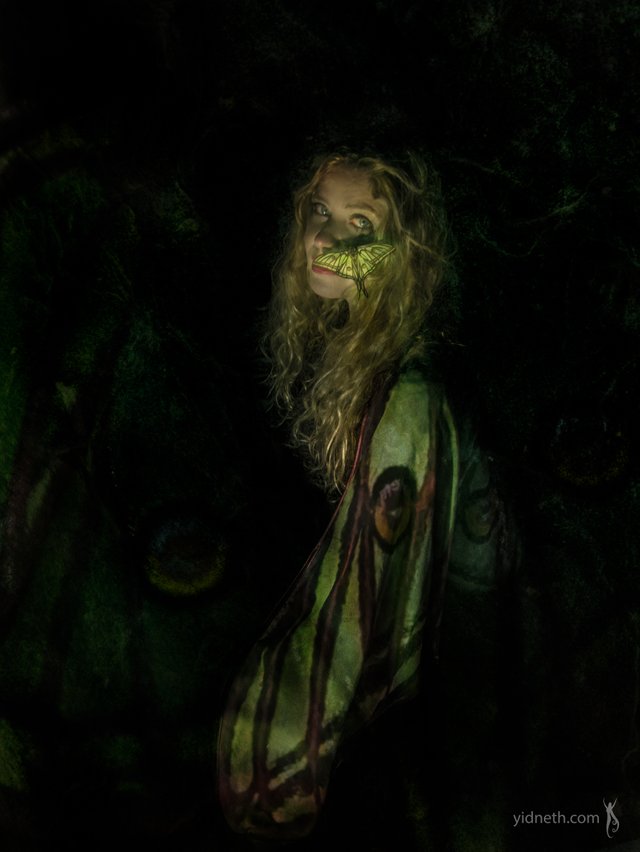.jpg)
A dream come true… I am having a rare Spanish Luna Moth on my face, a species I have wanted to see for a long time. It’s not bred but a wild one as they live in my region. Picture was taken at midnight a few weeks ago, so even if it is not the best due to light conditions, for me it’s a very special one and I’m going to tell you a little bit about this rare and beautiful species that almost look like out of the pages of a fairytale. How did this happen? And some curiosities about this “Ghost fairy”… keep on reading!
It is not secret for my readers here that I love moths, I even dress often like one or they’re mentioned recurrently in the lyrics of my moths. They also appear in many of my drawings…
I live now in Navarre, North of Spain, and here there is a particular species, famous worldwide for its beauty but living only were I live… sounds lucky, right? But I had not had the chance to see it yet. That dreams recently came true 🙂
Here is a link to a little video on twitter of me painting moths,
moths and moths and going a bit nuts about them (by the way I must
rescue and finish that painting). I could not attach the video here but
you can see it in this link:
https://twitter.com/i/status/903726971141537792
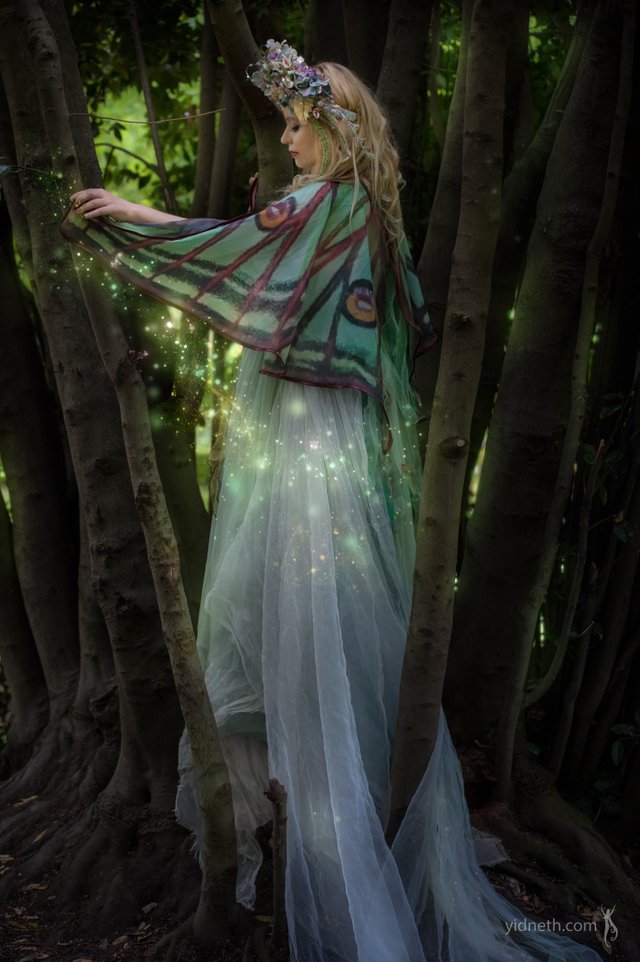
-2.jpg)
Above: me by Xorroxin Waterfall wearing my Spanish Luna Moth wings (made by my friends from El Costurero Real)
A very rare and beautiful Moth Species
The Spanish Moon Moon Graellsia Isabellae is a rare and large moth Graellsia isabellae, the Spanish moon moth, is in the silkmoth family Saturniidae. The genus only has this species. The moth was first discovered by Mariano de la Paz Graëlls y de la Aguera in 1846.
There are not enough data yet to know how threatened the species may be but it can only be found in some parts of Spain and France. Now mostly in Spain and some areas in Switzerland. I happen to be lucky in enough to live in a region where they can be found. They eat needles from Pine trees and do you remember I often visit some deer to feed them… they can be found in that forest precisely.
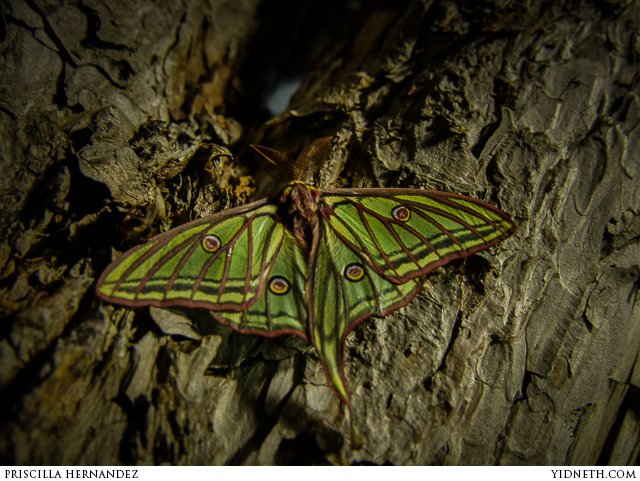
Above: Male Graellsia Isabellae on pine bark taken last 3rd of May 🙂
The adults are out April-June. Adults don’t eat, their only pupose is to mate and lay eggs. A few weeks ago a conservationist group organized an activity to spot Graellsias, and having tried on my own for two years in a row without success, even knowing a particular grove that is considered a reservoir of the species (just had seen them fluttering quickly now and then) I decided to join and they set up a white sheet and special lights (mercury lamps) in order to attract them (and other moth friends).
##Attracting the moths with Mercury Vapur Lamps and Why do Moths fly to light?
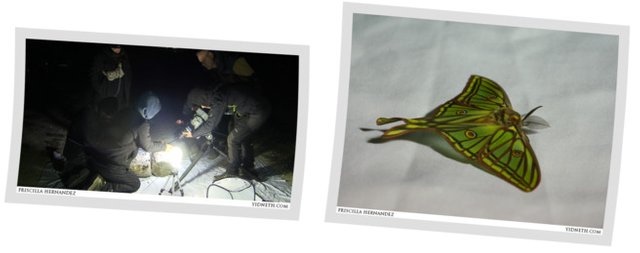
Above: Setting up mercury vapour lamps which are the most used to attract moths. Why are moths attracted to light is explained by their sense of orientation. In a behavior called transverse orientation, some insects navigate by flying at a constant angle relative to a distant light source, such as the moon and some artificial lights confuses them in their navigation messing their compass. It is very well known that Moths have “Positive Phototaxis”, they move “towards” the light- Also it’s thought them to have an “escape” mechanism as it’s likely less dangerous to fly upwards (towards the light) in order to escape. It’s also known that once there they come to the light tend to stay around it because they become “blinded” by it. We play that in our advantage as they perched on our white sheet.
But you know moths fly to light when they’re blind in delight (from my own song Nothing)
So we stood a few hours in the cold… We suspected not many moths would come (and in fact there were some cute furry visitors but it wasn’t a crowdy night. We shared some snacks and chatted with the others while “Asociación Zerynthia” (the organizers) explained some facts about moths in general and about the prejudices against them. But were we meant to see the elusive species that night?
Most people were already giving up when suddenly a Graellsia
appeared, with its slow graceful flutter. It was a male. People cheered
and we all stood very quiet in order not to tread on it. Minutes later
another male followed. Once they landed and calmed down we observed and
took pictures, and finally with the supervision of the entomologists we
took these portraits of me with one on my face 🙂
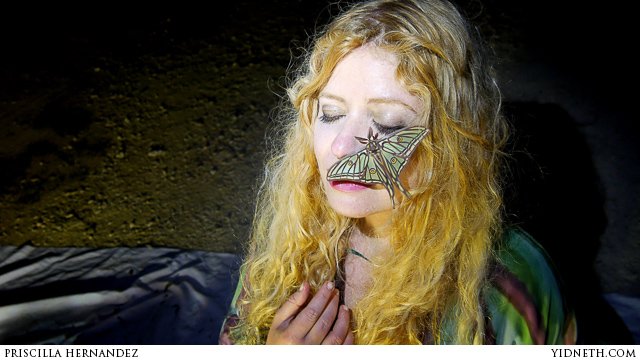.jpg)
Soooo cute and it felt ticklish!
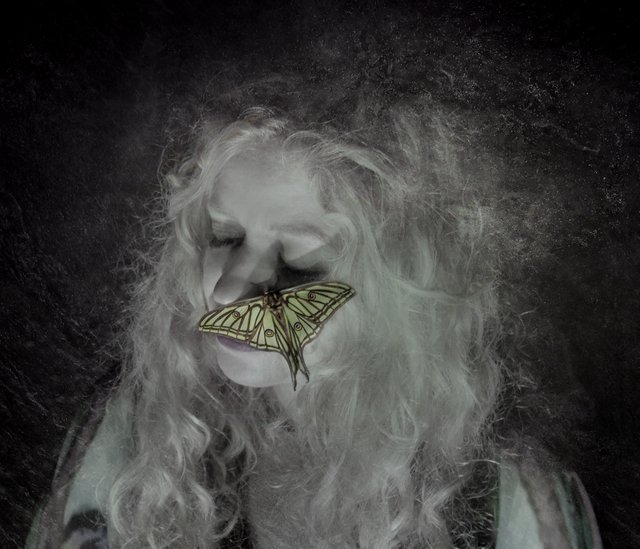
A few more interesting facts
There is a clear dimorphism between male and female. The male have feathery antennae and wing tails. Those antennae help the male to “smell” in order to find a suitable female to mate.
So maybe we have that misconceptions of moths as discoloured
These are my own lyrics from my song “At the Dreams Door” but not true at all 🙂 because, can’t they be more beautiful? Their wings look almost like a stained glass, kind of translucent against the light.
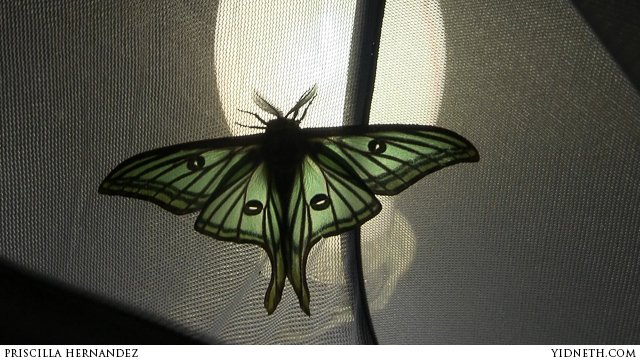.jpg)
Like stained glass
Will I emerge as butterfly into the vibrant daylight
or am I doom to be the moth as colourless as before
Or maybe you were never such colourless being, maybe you were the most precious of them all, if someone would look to under the light
I’m so thrilled that I’m repeating the experience again in a week fro now, hopefully bringing better light.
.jpg)
My Network
Networks
- https://patreon.com/yidneth
- http://youtube.com/yidneth
- https://instagram.com/yidneth
- https://facebook.com/yidneth
- https://twitter.com/yidneth
- https://soundcloud.com/yidneth
Priscilla Hernandez
singer-songwriter & illustrator
http://yidneth.com

